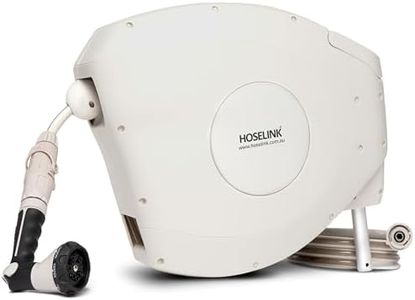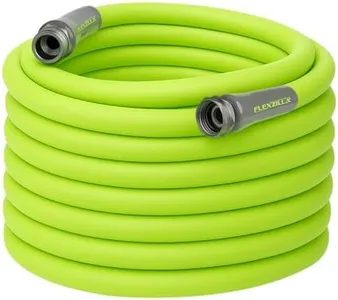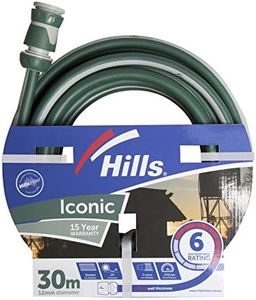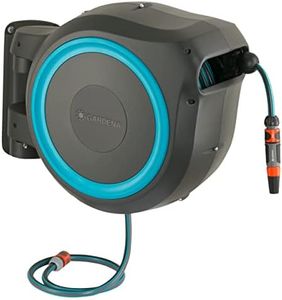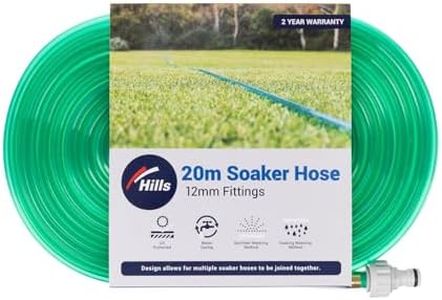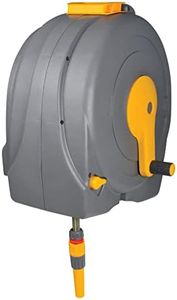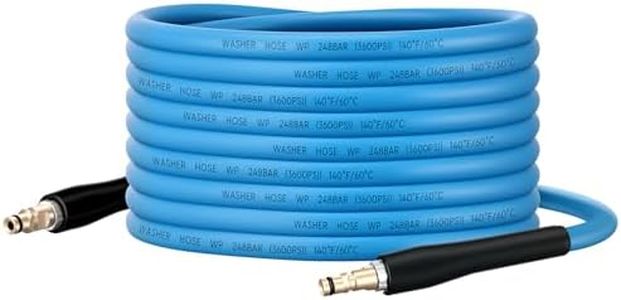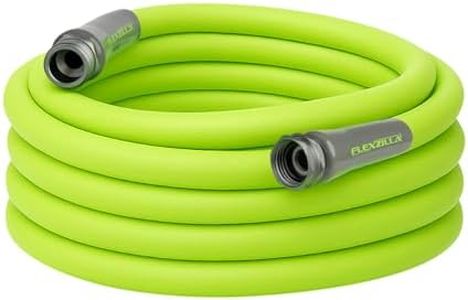We Use CookiesWe use cookies to enhance the security, performance,
functionality and for analytical and promotional activities. By continuing to browse this site you
are agreeing to our privacy policy
10 Best hoses
From leading brands and best sellers available on the web.By clicking on a link to a third party's website, log data is shared with that third party.
Buying Guide for the Best hoses
Choosing the right hose makes watering, cleaning, or other household and garden tasks much easier and more efficient. Each type of hose is designed with different uses and specific needs in mind, so it's important to think about how you’ll use it, where you’ll store it, and what features will make your tasks easier. By understanding the main specifications, you can confidently pick a hose that suits your needs and avoid common frustrations like leaks, tangling, or inadequate water flow.LengthThe length of a hose simply refers to how long it is from end to end. This is important because it determines how far you can reach from your water source. Hoses usually come in standard lengths like 25, 50, 75, or 100 feet. Shorter hoses are lighter and easier to manage, making them ideal for small gardens or patios. Longer hoses are good for larger yards or for reaching distant areas, but they tend to be heavier and can lose some water pressure over distance. To choose the right length, measure the distance from your spigot to the farthest place you’ll need to water, and pick the shortest hose that covers that distance—this helps avoid unnecessary weight and kinks.
DiameterThe diameter of a hose is how wide it is inside, which affects how much water comes out. Common diameters are 1/2 inch, 5/8 inch, and 3/4 inch. A 1/2 inch diameter is lighter and best for simple tasks like watering small flower beds, while 5/8 inch is a good all-around choice for most homes and gardens, offering a balance of good water flow and easy handling. A 3/4 inch diameter delivers the most water and is typically used for high-demand needs, like filling a pool or using with pressure washers, but it's also heavier. Think about what you'll mainly use the hose for—bigger diameter for more water, smaller for lighter work.
MaterialHoses are made from materials like vinyl, rubber, or reinforced mixes. Vinyl hoses are lightweight and easy to handle but can be less durable, especially in rough usage or extreme weather. Rubber hoses are heavier but much tougher, resistant to cracking and can handle both hot and cold water without degrading. Reinforced or hybrid hoses combine materials for added strength or flexibility. If you need a hose for light, occasional use and easy storage, vinyl might work; for frequent, tough use or harsh climates, rubber or reinforced hoses are a better choice.
Flexibility and Kink ResistanceThis describes how easily the hose bends without forming annoying knots or kinks that stop water flow. Some hoses are labeled as 'kink-free' or have built-in reinforcements that help them stay flexible but not collapse. Highly flexible hoses are simple to coil up and move around, but the most flexible types can sometimes be more prone to kinks unless designed to resist them. For ease of use, look for a hose specifically rated as kink-resistant if you move your hose a lot or don’t want to fuss with twists.
Couplings (Fittings)Couplings are the connectors at the ends of the hose that attach to your faucet or nozzle. They come in materials like plastic or metal (brass, aluminum). Plastic is lightweight and often cheaper, but can crack or break with frequent use. Metal fittings, especially brass, are much more durable and less likely to leak or break over time. If you plan to connect and disconnect your hose often, or if it will be left outside, choosing metal couplings can save you headaches.
Special FeaturesSome hoses offer unique features such as expandable designs, drinking water safety, or built-in reels. Expandable hoses grow longer under water pressure and shrink back when empty, making storage simple, but may be less rugged for heavy-duty tasks. If you want to drink from the hose or use it for pets, look for those labeled safe for drinking water. Reels help keep hoses tangle-free and compact. Consider these features if you have special needs like limited storage space or will use the hose for more than just watering plants.
